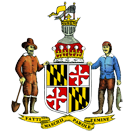| Source: Dictionary.com
http://encyclopedia.thefreedictionary.com/Yellow%20ribbon
[IMAGE: yellowribbon.jpg uploaded in ADD NOTES CAPTION:
Yellow ribbon flown in 1979 by Penne Laingen when her husband, US diplomat Bruce Laingen, was held captive during the Iran hostage crisis; among the first of the modern "yellow ribbons. Picture courtesy Library of CongressA yellow ribbon is symbolic of troops stationed away from home, especially if in combat. ]
A yellow ribbon is symbolic of troops stationed away from home, especially if in combat.
The symbol has since been adopted in civilian life for many kinds of people missing from their homes, popularized that way by the song 'Tie a Yellow Around the Ole Oak Tree', performed by Tony Orlando and Dawn Tony Orlando and Dawn was a pop music group that was very popular in the 1970s. Their signature hits were Candida, Knock Three Times, and Tie a Yellow Ribbon 'Round the Old Oak Tree.
In 1970, Tony Orlando was a failed cover singer. He had two Top 40 hits in the early 1960s but he did not have any success for the rest of the decade. He stopped singing entirely, publishing music for CBS records instead.
In October of 1971, [newspaper columnist] Pete Hammill wrote a piece for the New York Post called "Going Home." In it, college students on a bus trip to the beaches of Fort Lauderdale make friends with an ex-convict who is watching for a yellow handkerchief on a roadside oak. Hammill claimed to have heard this story in oral tradition.
In June of 1972, nine months later, The Readers Digest reprinted "Going Home." Also in June 1972, ABC-TV aired a dramatized version of it in which James Earl Jones played the role of the returning ex-con. One month-and-a-half after that, Irwin Levine and L. Russell Brown registered for copyright a song they called "Tie a Yellow Ribbon Round the Ole Oak Tree." The authors said they heard the story while serving in the military. Pete Hammill was not convinced and filed suit for infringement.
One factor that may have influenced Hammill's decision to do so was that, in May 1973, "Tie A Yellow Ribbon" sold 3 million records in three weeks. When the dust settled, BMI calculated that radio stations had played it 3 million times--that's seventeen continuous years of airplay. Hammill dropped his suit after folklorists working for Levine and Brown turned up archival versions of the story that had been collected before "Going Home" had been written. http://www.loc.gov/folklife/ribbons/ribbons.html
Many kinds of colored ribbons
have since been created and often worn on clothing to symbolize causes from Missing in action military personnel, to support for AIDS sufferers, to missing children.
In the United States military, the symbol of the yellow ribbon is used in this popular marching song, with lyrics altered from the song, She Wore a Yellow Ribbon written by Russ Morgan and performed by The Andrews Sisters.
The text of the Army version approximates the following, with local variations:
Around her hair she wore a yellow ribbon
She wore it in the springtime
And the merry month of May
And if you ask me why the heck she wore it
She wore it for her soldier who was far far away
Far away, far away
She wore it for her soldier
Who was far, far away
Around the block she pushed a baby carriage
She pushed it in the springtime
And the merry month of May
And if you ask me why the heck she pushed it
She pushed it for her soldier who was far far away
Far away, far away
She pushed it for her soldier
Who was far, far away
The words and meter were probably changed both for copyright and for cadence, as the lines are typically sung in time to the steps of the march by the Drill Instructor and responded to by the troops. |
